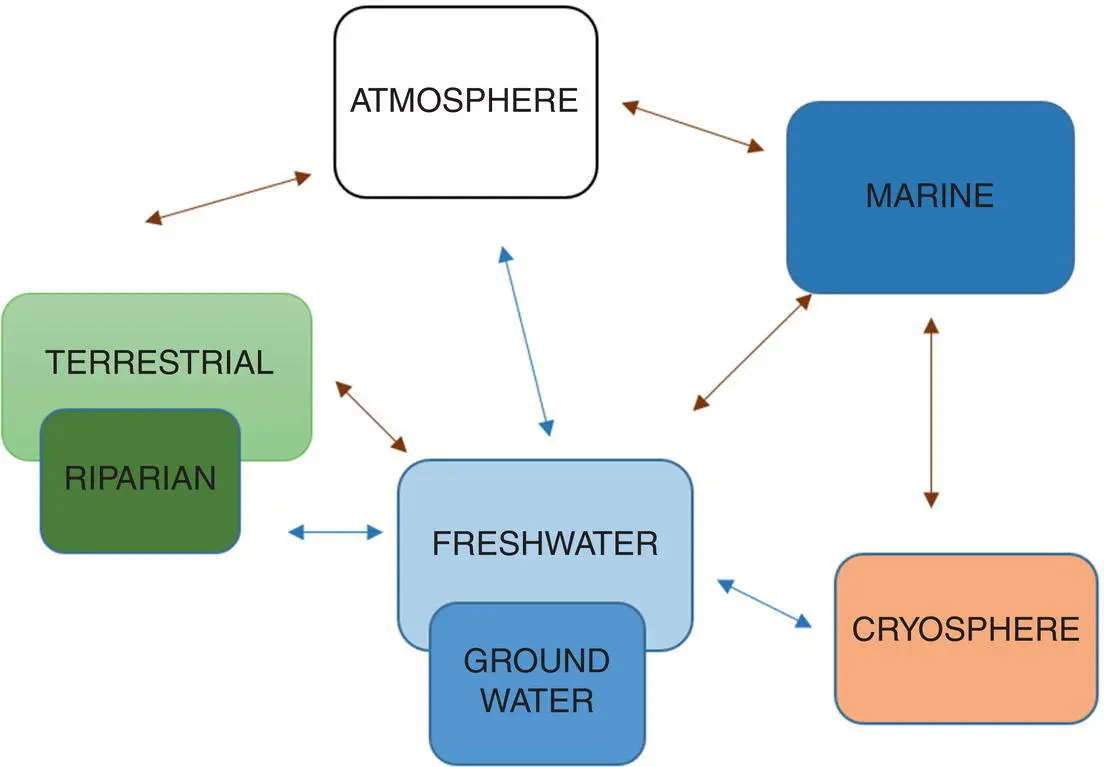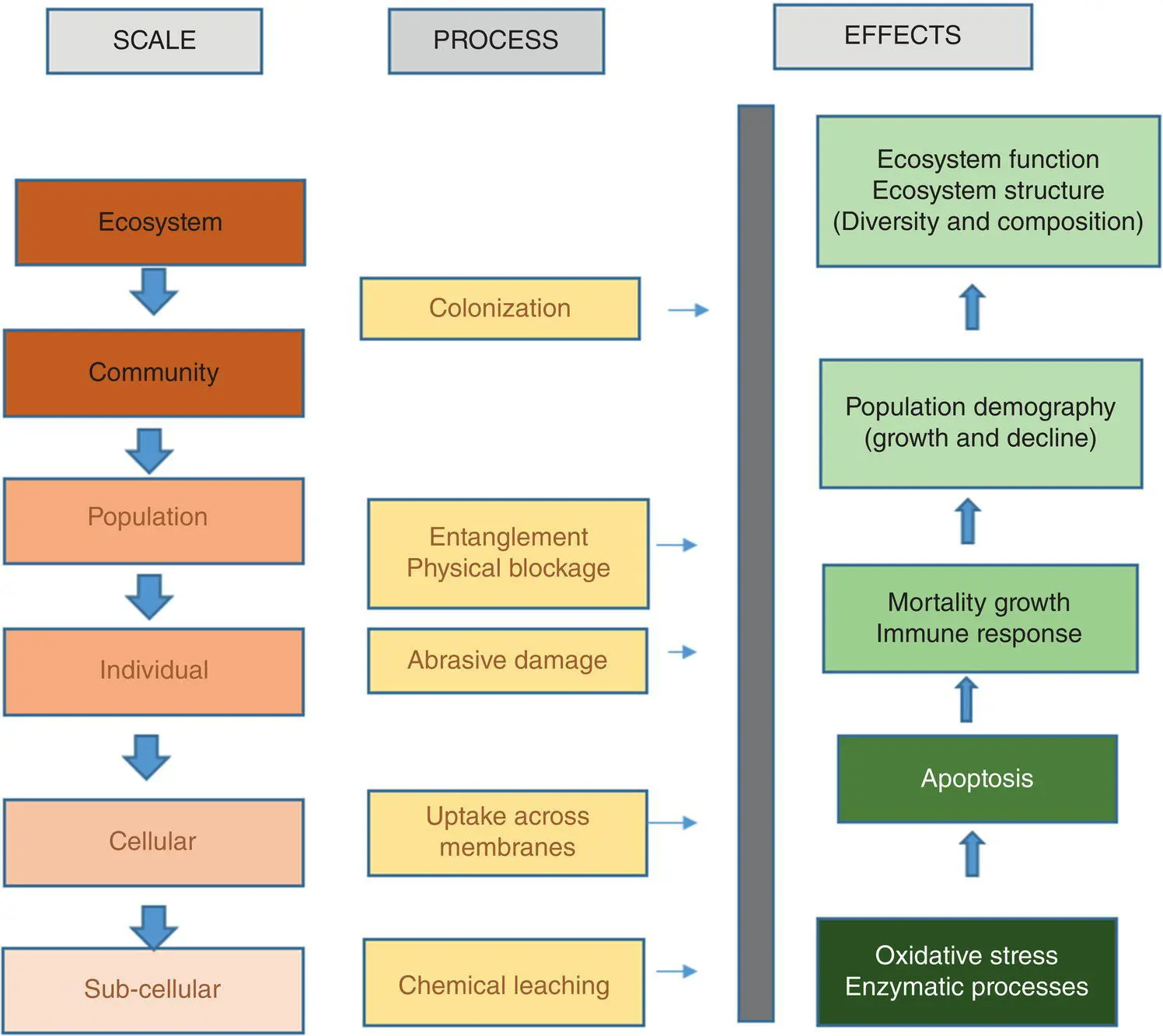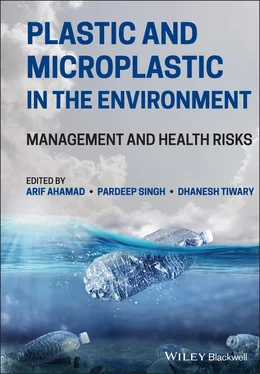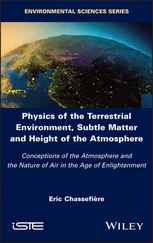Plastic and Microplastic in the Environment
Здесь есть возможность читать онлайн «Plastic and Microplastic in the Environment» — ознакомительный отрывок электронной книги совершенно бесплатно, а после прочтения отрывка купить полную версию. В некоторых случаях можно слушать аудио, скачать через торрент в формате fb2 и присутствует краткое содержание. Жанр: unrecognised, на английском языке. Описание произведения, (предисловие) а так же отзывы посетителей доступны на портале библиотеки ЛибКат.
- Название:Plastic and Microplastic in the Environment
- Автор:
- Жанр:
- Год:неизвестен
- ISBN:нет данных
- Рейтинг книги:5 / 5. Голосов: 1
-
Избранное:Добавить в избранное
- Отзывы:
-
Ваша оценка:
- 100
- 1
- 2
- 3
- 4
- 5
Plastic and Microplastic in the Environment: краткое содержание, описание и аннотация
Предлагаем к чтению аннотацию, описание, краткое содержание или предисловие (зависит от того, что написал сам автор книги «Plastic and Microplastic in the Environment»). Если вы не нашли необходимую информацию о книге — напишите в комментариях, мы постараемся отыскать её.
Thought-provoking discussions of the challenges posed by—and potential solutions to—plastic and microplastic pollution Plastic and Microplastic in the Environment: Management and Health Risks,
Plastic and Microplastic in the Environment
Plastic and Microplastic in the Environment: Management and Health Risks
Plastic and Microplastic in the Environment — читать онлайн ознакомительный отрывок
Ниже представлен текст книги, разбитый по страницам. Система сохранения места последней прочитанной страницы, позволяет с удобством читать онлайн бесплатно книгу «Plastic and Microplastic in the Environment», без необходимости каждый раз заново искать на чём Вы остановились. Поставьте закладку, и сможете в любой момент перейти на страницу, на которой закончили чтение.
Интервал:
Закладка:
The threat of plastic pollution can be managed early through efficient source identification. In recent years many researchers have reported potential MP sources, fluxes, and sinks of these pollutants using theoretical models ( Figure 2.1) across a wide variety of hydrological reservoirs (Alimi et al. 2018; Browne 2015; de Souza Machado et al. 2018; Horton et al. 2017; Horton & Dixon 2018; Nizzetto et al. 2016; Wagner et al. 2014). Extensive risk management and assessment of this emerging contaminant requires a proper and exhaustive understanding and quantification of the sources and emissions pathways across the world, spatially as well as temporally, with a special focus on freshwater sources and fluxes, This will help in the understanding of the sources, fluxes, and sinks, and contribute immensely to a proper estimation of the global budget of plastics input to the oceans, which can be useful for source mitigation schemes and for planning long‐standing monitoring and assessment strategies.

Figure 2.1 Showing the pathways of plastic fluxes across the various hydrological reservoirs, indicated by brown arrows, which represent the fluxes where extensive research is going on. Blue arrows represent plastic fluxes (theoretical) that have yet to be studied in detail
Source: Modified from Windsor et al. 2019.
2.3 Global Ecological Impacts of Plastic Pollution
The harmful effect of plastics on the various life forms and the ecology may be due to various feedback mechanisms ( Figure 2.2). While available literature reports mostly physical effects due to exposure to this pollutant on organisms or ecosystem function, chemical effects due to various processes such as adsorption and bioaccumulation of toxic chemicals, and the impacts due to leaching of harmful additives in plastics have not been investigated.
One of the most observed hazardous physical effects of plastic pollution that has been found in various studies is entanglement and external physical damage to larger organisms from plastic items such as fishing nets and rope (Jacobsen et al. 2010). The smaller organisms also face problems such as zooplanktons exposed to MPs, which suffered from antennal and carapace deformities (Ziajahromi et al. 2017). Moreover, due to the similarity in size of these debris with that of the larvae of several organisms and planktons, many aquatic life forms can suffer by ingesting these plastics (Besseling et al. 2014; Boerger et al. 2010; Browne et al. 2008; Kaposi et al. 2014; Tanaka & Takada 2016). Recently, several studies have investigated that the hazardous chemicals can be transported into organisms through various pathways, and these can eventually cause health hazards in humans by reaching through the food chain, which is another concern (Besseling et al. 2017; Browne et al. 2013; Koelmans et al. 2013; Koelmans et al. 2016; Rochman et al. 2015; Tanaka et al. 2013, 2015; Thompson et al. 2009; Van Cauwenberghe & Janssen 2014; Wright & Kelly 2017). A recent study (Wilson et al. 2020) revealed that plastics represent the most diverse habitat for invertebrates in some rivers, which is a sad state of affairs.

Figure 2.2 Ecological effects of plastics (
Source: adapted and modified from Windsor et al. 2019
).
2.4 Socio‐Economic Impacts of Plastic Pollution
Plastic delivers many benefits to society and is responsible for the promotion of a wide range of technological advances which have revolutionized our day‐to‐day lives. However, increasing awareness and available records of potential environmental impacts, at present mostly on the marine world (Thompson 2017), are forcing us to stress upon the potential negative impact on the economy and various industries, such as fishing and tourism. Very scattered and scarce data are available, mostly restricted to local impacts, yet these are indicative of widespread global socio‐economic effects due to plastic pollution. The fishing industry, in particular, is likely to suffer detrimental impacts of plastic pollution due to reducing amount and damaged catches (Thompson 2017); one such study surveyed fishing vessels in Scotland and revealed that 86% of the fishing vessels reported that plastic pollution in the sea resulted in a reduction in fish catches (Mouat et al. 2010). In addition, another serious problem is entanglement reported within marinas and harbors, with 70% of the marinas and harbors that were surveyed reported that they experience various problems due to plastic litter (Mouat et al. 2010).
Contaminated catches may also result in significant economic loss due to the high concentration of plastics in the fish stocks (Foekema et al. 2013; Lusher et al. 2013). Moreover, it may have a detrimental effect on the salability of commercial fishes due to the negative public perception of these contaminated supplies (GESAMP 2016). Another industry likely to be affected is tourism, as public perceptions of esthetically pleasing and clean sites are likely to influence people's choices of places to visit. Tourists visiting the coasts may not have positive feedback about the locations where they found litter, affecting the market value of the place as a tourist destination (Brouwer et al. 2017), and litter on beaches can cause physical injury (Werner et al. 2016). Thus, to boost the tourism sector and for environmental reasons, the local authorities execute cleanliness drives (Mouat et al. 2010). Plastic wastes are causing huge problems in tourist places, e.g. blockage in sewage drains and the combined costs of removing these plastics as well as the loss in tourists will have a negative effect on the tourism sector (Drinkwater & Moy 2017).
2.5 Freshwater Plastic Pollution
Freshwater plastic pollution is an emerging hazard. To overcome this global challenge, reliable data on river plastic transport and accumulation is key. Approximately 4 million tons of plastic waste enters the oceans via rivers every year. River health is intrinsically linked to marine health; there is no separating the two. Why are people more concerned about plastic in the ocean than they are about plastic in rivers? Most ocean plastic ‘litter’ originates on land, with major rivers providing important source‐to‐sink pathways into the ocean. How effectively the problem of plastic pollution in the ocean can be resolved is dependent on establishing effective methods for surveying, quantifying, and modeling pollution pathways on land and examining how these can vary through time. Because it will be a herculean task to clean up the plastic debris that have already filled up the oceans, we must take necessary steps and precautions to reduce the amount of plastic entering the marine environment. To prevent the plastic debris from entering the sea, the path taken by the plastic has to be elucidated so that immediate and efficient steps can be taken.
To date, there is very little available data on the quantification and characterization of riverine MPs. As the impact of plastic pollution increases with decreasing particle size, the investigation of MPs (particles <5 mm) is particularly relevant. MPs particles, ranging from microns to millimeters in size, pose a significant risk to natural ecosystems and habitats. However, despite the potential ecological impacts from MPs pollution, the ability to accurately predict MP transport by environmental flows (e.g. in rivers, estuaries, and coastal currents) is limited. It is important to understand how they are transported to predict their dispersion and behavior, and ultimately understand their impact on ecological and human health. The extensive quantification of major rivers as sources of MPs pollution is yet to be established, and extensive research is needed to focus on transport pathways, fluxes, and fate of this emerging pollutant to understand the threat it poses to human health and ecosystems across the world (Alimi et al. 2018; Browne 2015; de Souza Machado et al. 2018; Horton et al. 2017; Horton and Dixon 2018; Nizzetto et al. 2016; Wagner et al. 2014).
Читать дальшеИнтервал:
Закладка:
Похожие книги на «Plastic and Microplastic in the Environment»
Представляем Вашему вниманию похожие книги на «Plastic and Microplastic in the Environment» списком для выбора. Мы отобрали схожую по названию и смыслу литературу в надежде предоставить читателям больше вариантов отыскать новые, интересные, ещё непрочитанные произведения.
Обсуждение, отзывы о книге «Plastic and Microplastic in the Environment» и просто собственные мнения читателей. Оставьте ваши комментарии, напишите, что Вы думаете о произведении, его смысле или главных героях. Укажите что конкретно понравилось, а что нет, и почему Вы так считаете.












